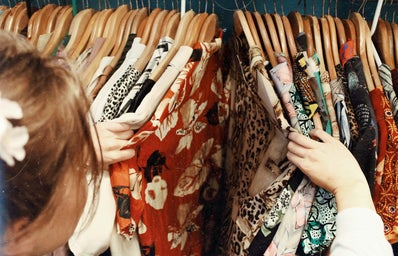If you haven’t already heard of fast fashion giant SHEIN, you’re not missing out on much. This ultra fast fashion website prides itself on providing consumers with easy and affordable access to the latest fashion trends. Whether you’re looking for tops for going out, activewear, sleepwear, bathing suits, shoes or accessories, SHEIN has it all. But just look a little deeper, and all of this comes at a big cost to our environment, the efforts of independent fashion designers, and garment workers who slave away to provide us with our trendy goods.
Despite this, SHEIN remains insanely popular. There are endless TikTok and YouTube “haul” videos that are sponsored by SHEIN or are just for fun. A search for #SHEIN on TikTok leads to a staggering collection of videos with a total of 15.4 billion views. Some of these include young women who spend hundreds of dollars on the site and share with their audiences their newly arrived, enormous cardboard boxes full of 100% polyester (which won’t decompose for at least 20 years. It might even take 200!).
However, SHEIN has been called out for using child labor, lying on their website, and providing absolutely 0 brand transparency. Do we really want to be buying from a company that sold swastika necklaces, advertised Muslim prayer mats as “decorative rugs”, or that has been involved in countless instances of art theft? (Yes, this all really happened.)
SHEIN has stolen from small designers many times, leaving them heartbroken and disappointed. Fashion designer Mariama Diallo had her designs stolen “to a T” by SHEIN. She expressed how “sh*t like this makes me not even want to design.”
SHEIN has a supplier code of conduct on their website, but policies mean nothing if they are not enforced — SHEIN provides no proof that this is being done. SHEIN says they “never. EVER engage in child or forced labor,” but we cannot accept this at face value. Instead, we should be asking ourselves this: how did they find themselves in such hot water that they had to say this on their website? How do we know if this is really true? They also do not provide proof of how they enforce labor laws or maintain “happy and healthy” working environments for workers. If there is no proof, we can’t in good faith believe what they have to say. Many garment workers labor in dangerous conditions that lead to tragedies like the 2013 Rana Plaza disaster, in which 1,132 people were killed and more than 2,500 were injured.
SHEIN produces thousands upon thousands of items of new clothing each day. This mass production is consistent with our attitudes towards clothing — that it is disposable and should be purchased on a regular basis. The average American generates 82 pounds of textile waste per year, and one garbage truck full of clothes is burned or landfilled every second. The fashion industry is the second largest polluter in the world and contributes to 10% of all global carbon emissions.
SHEIN may be wildly popular, but I think that a lot of members of my generation are coming to realize that we, as individuals, need to adopt better fashion habits in order to do better for the planet and fellow human beings. Many of my friends and classmates are aware of poor working conditions that people face and the all-too-common usage of cheap, low-quality and environmentally disastrous clothing materials. Fast fashion consumption is a polarizing issue for some, but it shouldn’t be. It should be clear to any buyer who clicks “Place order” on a fashion website that they are making an ethically wrong decision, unless the brand truly does its best to provide transparency and engage in ethical practices.
It might be tempting to frequently purchase cheap clothing, but we should instead treasure and rewear the pieces we already have. It might be addicting to habitually browse through the SHEIN, Urban Outfitters or American Eagle apps, but why not do your homework or read a book instead? By educating ourselves about our clothing and purchasing secondhand, we can, as consumers, make a difference.

